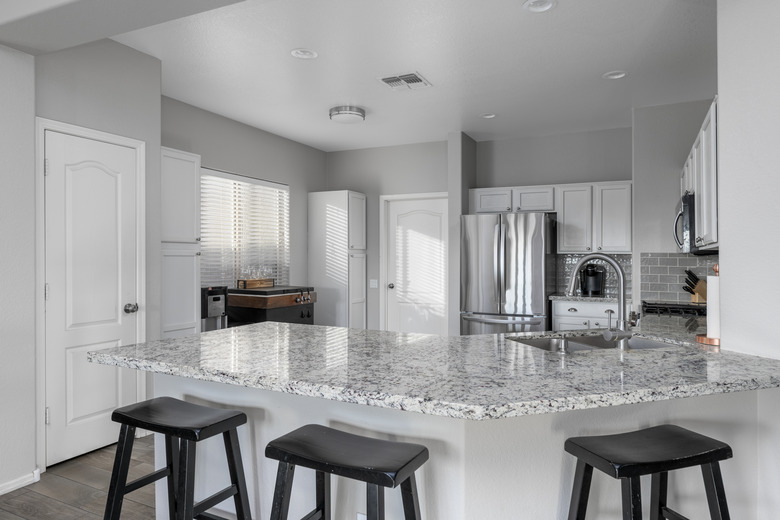Why Are My New Recessed Lights Blinking?
Recessed lights are eye-appealing light sources that you can install throughout your home. Recessed lights are constructed as inserts in a ceiling, so the light bulbs are flush with the surface of the ceiling. They can be used as general purpose lights, border lights. or spotlights that enhance architectural features. If you notice recessed lights flickering in your recent installations, there are several reasons why that might be occurring. Here's what to know — and how to repair the problem.
Thermal Protection Switch
Thermal Protection Switch
Evaluate whether your thermal protection switch, often referred to as a thermocouple, is the cause of lights flickering and dimming in the house. A thermocouple is a tubular fixture that's wired between the line and load of a recessed light. Since the early 1980s, Underwriters Laboratory has required that all approved recessed lighting fixtures have thermal protection switches built into the fixtures.
This switch automatically turns a recessed light off if the temperature inside the fixture gets too hot and turns the light back on once the fixture cools. The switch prevents wire damage and alerts you that there could be an internal heat problem. Listen for the internal click of the switch to evaluate if overheating is the problem.
Light Bulb Wattage
Light Bulb Wattage
Another potential cause of blinking recessed lights is excessive light bulb wattage. If the light bulb in your recessed light has too high a wattage, then the bulb emits too much heat. The overheating triggers your thermal protection switch and causes the light to blink.
Remove the bulb and look at the labeling inside the recessed light housing to locate the maximum light bulb wattage specifications. Replace the light bulb with a lower-wattage bulb if it exceeds the limit. Use approved light fixture trims around your recessed lights to ensure that heat from the bulbs is properly contained.
Ceiling Insulation
Ceiling Insulation
Examine the ceiling insulation near your recessed lights. Some recessed fixtures known as IC fixtures can be smothered in insulation. However, recessed light fixtures without IC designation must have a minimum of 3 inches of clearance between the fixture, the junction box, ballasts, and insulation.
The National Electric Code requires that nothing be installed above the light fixtures that could trap heat or block air from circulating through the fixture. If insulation is too close to your recessed lighting, the fixture will overheat and trigger the thermal protection switch. As a result, your lights will blink off and on.
Loose Wiring Recessed Light Flickering
Loose Wiring Recessed Light Flickering
Loose wiring can cause intermittent flickering LED lights in fixtures. Turn off your circuit breaker and examine the wiring, or hire a professional electrician to ensure that your wiring is not loose or malfunctioning.
Recessed lighting installation requires you to connect white wires to white wires and black wires to black wires. When the wires are spliced together, they must be twisted in the same direction. Join the wires together with pliers, trim excess wire, and secure them with a wire nut. If the wires aren't properly spliced, tightened and secured, the connection between them can cause recessed lights to flicker and blink.
Common Reasons Why Recessed Lights Blink
Common Reasons Why Recessed Lights Blink
If you notice that your recessed lights have started blinking, it's most likely the following that is causing it:
- The thermocouple has turned off the lights due to excessive heating
- Excessive light bulb wattage
- Insulation has been installed too close to the recessed lighting
- Loose wiring
Check in with a professional electrician to see if they can examine the recessed lighting and provide a safe fix.
